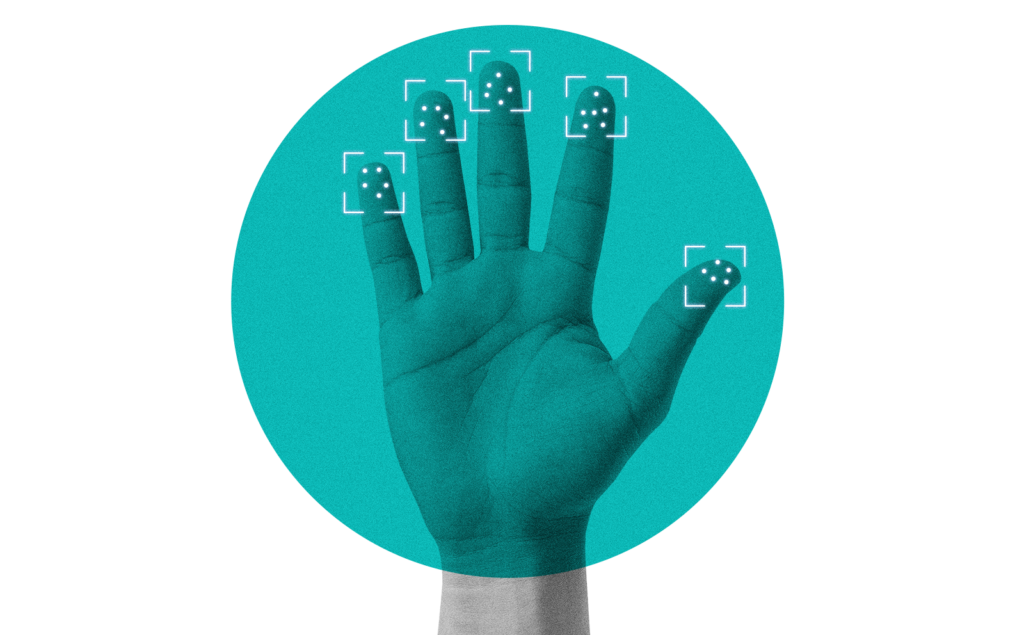Biometrics has brought faster, modernised elections to Albania

Contributor

Alexander Rakov
Sales Vice President for Europe, Smartmatic
In 2021, Albania revolutionised the way people vote in the country. During the last national elections, citizens cast their ballots using electronic voting machines, while state-of-the-art fingerprint biometric technology was used for voter authentication. The new system sped up the elections – reducing them from two days to just one – and it has received overall applause. So how has the voting process changed?
Albania only began holding democratic elections in the 1990s. Like much of the world, the country historically used manual processes for election tasks – essentially, paper and pen. Voters presented their ID at the polling station, and poll workers manually looked up their registration in bound paper files to confirm their eligibility to vote. At that time, elections lasted for two days.
Then, the Central Election Commission of Albania – the independent agency responsible for conducting parliamentary and local elections in the Republic – decided that it was the right time to start modernising the voting system. Despite the country not having experienced any particular issues with unreliable IDs, multiple voting, or other fraudulent voting processes, Albania’s electoral commission wanted to utilise technology to set up superior elections that would be both faster, and provide an increasingly transparent voting process.
The main reasons countries might consider using biometrics in their elections:
- Citizens do not have reliable and trusted identification documents that can be used for voter registration;
- Multiple registrations are a major problem;
- Multiple voting and voter identification at polling stations are major problems;
- Voter registers cannot be extracted from other reliable and trusted registers;
- It is difficult to establish the identity of citizens based on reliable IDs at the polling stations.
In 2020, the Albanian authorities amended the country’s legal framework to enable biometric voter verification. They then partnered with Smartmatic – a world leader in creating and implementing secure election technology and voting systems – to rapidly build a new system that included electronic voting and digitalised voter authentication, thus substituting paper and pen at the polling stations.
“The leaders of the country recognised that biometrics would enhance the integrity of Albania’s elections,” says Alexander Rakov, Sales Vice President for Europe at Smartmatic. Actually, there are many motivations leading countries to modernise their election systems and opt for biometrics: transparency, security, and speeding up processes being the most common. But Albania had one more. “One of the unique motivations for Albania was its desire to join the EU. Albania only began holding democratic elections in the 1990s, and to qualify for admittance to the EU it needed to prove its elections were valid,” comments Rakov
Modernised elections in Albania – how they look
In 2021 the Central Electoral Commission of Albania deployed more than 5,500 biometric voter verification devices to over 3,300 locations – it was a nationwide affair. The Electoral Commission, working together with Smartmatic, launched a voter-education campaign some months before the elections to explain the new registration and check-in processes to the public.
“At the same time, Smartmatic recruited and trained more than 400 people to work in help desk, field support, and logistics roles,” explains Rakov. “The company provided warehouse services, equipment configuration, and onsite tech support. Smartmatic also installed and equipped a primary and secondary data centre.”
Everything was ready for election day.
The biometric voter verification device is a fingerprint reader that registers voters’ fingerprints when they come to the polling stations on election day. The operational model for voter verification in Albania does not need voters’ fingerprint records prior to an election:
“It was a nationwide affair – the Central Electoral Commission of Albania deployed more than 5,500 biometric voter verification devices to over 3,300 locations.“
“The system consists of two parts,” explains Rakov. “First, it captures voters’ fingerprints during the verification process at the polling stations. Then after the election, the collected fingerprints are matched to identify potential cases of double voting. In case of double voting, these cases are identified by an Automated Biometric Identification System (ABIS) and sent to an audit process with the authorities in Albania.”
After verification, Albanian voters were able to cast their ballots electronically using touchscreen devices, to elect 140 lawmakers from the 1,841 candidates. The electronic voting machines confirmed each voter’s operation and printed a ballot receipt.
Why are thumbprints used for biometric verification?
Thumbprints are usually preferred because they provide the largest number of unique identifying points: curves, ellipsis, rounds – details that are often called minutiae. These points are the top-level means of demarcation used to classify prints within data sets.

The biometric technology behind it
The Automated Biometric Identification System (ABIS) used in Albania uses fingerprints captured with a high-resolution fingerprint reader. It is state-of-the-art technology.
“This is very different from the Automated Fingerprint Identification System – AFIS in short – that law enforcement uses for latent fingerprints. The inherently low quality of latent fingerprints makes comparisons difficult – even for high-quality AFIS equipment. This translates into longer processing times and potentially lower accuracy rates,” explains Rakov.
Law enforcement AFIS’ typically use an assortment of biometric scanning devices to capture a variety of print types that have been collected using different methods. For example, single fingerprints, 10-prints or palm prints that have all been collected via different methods, e.g. ink on paper using a range of different inks and paper finishes, or partial latent prints that have been extracted from countless types of surfaces and materials. The ABIS deployed by the Central Electoral Commission of Albania for Voter Authentication purposes does not face any of these challenges.
“Thumbprints are scanned and digitised directly into the system with high-resolution devices that use a uniform process every time. This produces consistent, high-quality data that is much faster to read and match. The information is processed in the device with AES-256 data encryption,” Rakov concludes.
Verifiable, fast, and transparent processes: all the things that worked for good
The modernisation of elections in Albania was definitely a success. After the country’s 2021 Parliamentary election and following the deployment of the new voting system, six Albanian municipalities used the same solutions for their local elections in March 2022.
“Biometrics give election officials a means of ensuring verifiable identification of citizens when they register to vote, and authentication when the same citizen checks in at the polling station to cast their ballot.”
“Like many other countries, Albanian officials quickly understood the benefits of utilising biometric technology. Biometrics give election officials a means of ensuring verifiable and incontrovertible identification of citizens when they register to vote, and authentication when the same citizen checks in at the polling station to cast their ballot,” explains Rakov. At the polling station, it greatly sped up the check-in process, which is a benefit to both voters and poll workers.
Plus, in between elections, biometrics has provided authorities with a tool to verifiably de-duplicate voter registers. “This ties back into another benefit to voters,” says Rakov, “as their personal information will remain intact regardless of changes in their life, such as relocating or divorce.”
Thumbs up for the new technology
The system worked as planned, with the voter-education campaign most likely having made a big difference in preparing voters prior to election day. Generally, Albanian officials, election officials from neighbouring countries, and third-party election observation missions all dubbed the implementation a success.
“We observed some of these centres, and I can say that it was an extraordinary success,” said Valdete Daka, Chair of the Central Election Commission in neighbouring Kosovo. Azay Guliyev, a special coordinator of the OSCE/ODIHR Election Observation Mission, observed that the authentication system reduced the risk of family voting. Family voting is when a family member – typically a patriarch – dictates voting to other members of their family or votes in place of that family member. “I hope this technology will be used more in future elections,” said Guliyev.
Ursula Gacek, Head of the Election Observation Mission, said that these elections showed that confidence in the electoral process is continuing to be restored. “Last year’s political agreement prompted important reforms and led to the introduction of electronic technology, which served to increase confidence in the electoral process.”
“There are no mistakes because everything is automatic.” According to citizens, the process has been faster – a matter of seconds – and the results of the elections also came out faster.”
On the other hand, citizens too have emphasised that an automatic system leads to greater trust from their point of view: “There are no mistakes because everything is automatic.” According to interviewees, the process has been faster – a matter of seconds – and the results of the elections also came out faster.
The overall feeling in the population is that Albania will continue to use electronic voting and biometrics. And this will likely be the case. “Albania has stated publicly that it is committed to continually enhancing its election integrity. Biometrics is a big part of that commitment, as evidenced by the Central Electoral Commission of Albania’s use of this technology in two sequential elections,” concludes Alexander Rakov.
AUTHOR
Giovanni Blandino
PHOTOS
Shutterstock









